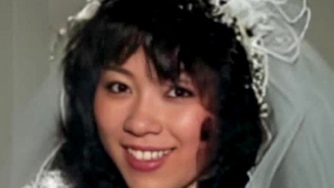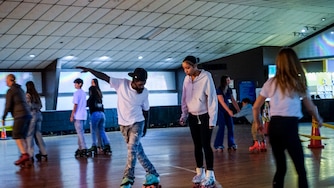When building their depth over the course of an offseason, be it major league depth or further down the ladder with minor league free agents, the Orioles always try to be honest about the opportunity they’re presenting to a player.
They’re deliberate in setting an appropriate expectation with players and agents so everyone is on the same page as spring training arrives.
That’s going to be quite a headache to accomplish on the starting pitching front this offseason, and amid parallel hiring cycles for a manager and a significant front office role, a top priority for the Orioles’ current brass has to be figuring out exactly what shape those opportunities in the rotation might take.
Dean Kremer led the team with 171 2/3 innings last year, and with Tomoyuki Sugano set to be a free agent, Kremer is the only season-long starter set to return. Trevor Rogers pitched 109 2/3 sparkling innings in the majors and an additional 32 2/3 in the minors, so expecting him to take a full season’s workload feels fair.
Beyond that, you can feel pretty good about getting consistent quality from Kyle Bradish, Tyler Wells and Grayson Rodriguez when they’re available. Bradish gave the Orioles 32 innings with a 2.53 ERA after returning from Tommy John elbow reconstruction surgery, and Wells returned from his own elbow injury to pitch 21 2/3 innings with a 2.91 ERA down the stretch.

Bradish tossed an additional 22 innings on rehab assignment, while Wells added 25 1/3 innings with affiliates; it’s unclear whether either pitched in simulated games in Sarasota that would add to that total. Rodriguez, meanwhile, didn’t throw a pitch in a game this year due to elbow and lat injuries.
As the season wound down, Bradish said he expected to have a relatively normal offseason and wasn’t sure what the plan would be for next season’s workload. He and the team opted against setting any kind of goals for his 2025 innings count to avoid undue pressure — but he has high hopes for 2026.
“For myself, I would like to make 30 starts,” Bradish said. “Obviously, it’s not probably going to be six innings each outing, because that would be 180 innings and that would not be very smart. But I think there’s ways around it, and there’s other ways to cut innings out somewhere.”
While some pitchers have made significant innings jumps after long layoffs and seen no adverse effects, AL Cy Young contender Garrett Crochet missed all of 2022 after having Tommy John, pitched 25 innings between the majors and minors in 2023 before going down with a shoulder injury, then came back to make 32 starts and pitch 146 innings in his breakout 2024 season with the White Sox. This year, he pitched 205 1/3 innings for Boston.
More often, caution is taken in such cases and pitchers scale deliberately. There’s not much by way of accepted math — and the Orioles’ assessment will be made on an individual basis. President of baseball operations Mike Elias said “there’s a way and a possibility” Bradish can pitch all year next year “in a responsible way,” and he said the team still views Wells as a starter. What’s best for Bradish and Wells may not apply to Rodriguez, who hasn’t pitched since July 2024, though Elias said he was “bullish” about the situation.
What’s undeniable is that those five names — Rogers, Bradish, Wells, Rodriguez and Kremer — make for an imposing rotation on paper. It’s just not a group the Orioles can bank on running out there come late March — or for the ensuing six months — with any consistency.
Combine the uncertainty there with the elbow and shoulder injuries that limited swingman Albert Suárez all season and the general inconsistency of young starters Cade Povich and Brandon Young, and the Orioles simply have a lot to consider about their internal rotation candidates before they go out and add.
This is something the Orioles have done with varying success the last couple of years. Whatever their process was that led them to decide they needed Corbin Burnes before the 2024 season, it was a good one. Baltimore’s pursuit of short-term depth ahead of the 2025 season was far less successful, with Sugano and Charlie Morton not enough to cover the myriad issues the rotation faced.

Those include the expected absences of Bradish and Wells and the unexpected ones of Rodriguez, Suárez and, eventually, Zach Eflin. Elias said it would have “taken a lot of overkill to plan for losing all that depth, but we need to put together a better just overall pitching staff going into next season to guard against stuff like that, but also to raise the ceiling of the team, too.”
That last qualifier is meaningful to me. Before the 2024 team stumbled, the high-quality depth of the rotation made it one of the league’s best. That’s the kind of upside the Orioles have the opportunity to add, and that means they have real opportunity to sell in free agency, both at the top of the rotation and in depth spots.
The names already on their roster may not make it seem that way at first blush. But if the Orioles tell an agent or free agent there’s a chance to pitch in this rotation, they’re going to be telling the truth.





Comments
Welcome to The Banner's subscriber-only commenting community. Please review our community guidelines.